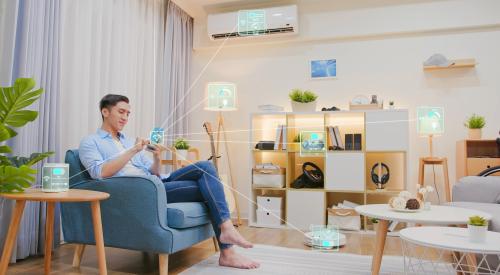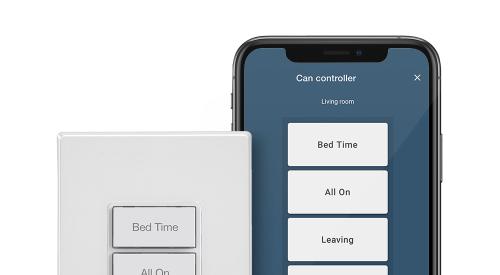| This access-controlled delivery drop box from Brivo gives owners a safe place to receive everything from web-ordered groceries to dry cleaning.
|
When it comes to the broad umbrella of home systems -- from electronic fences for dogs to customized theater systems -- builders have known for awhile that despite the buzz, buyers are reluctant to pick up the tab when such devices are offered as new home options. This reality has created an enormous gap between what is technologically possible and what people actually use in their homes. That is why a growing number of builders are taking a more proactive approach -- looking for technology that can be added to homes at a modest price while still pushing the envelope.
By taking the lead on the technology front, the goal for companies like Shea Homes San Diego is to create a real point of separation between it and other competitors in the marketplace, says Ryan Green, Shea’s manager of community development. Green this fall is enthusiastically immersed in the vetting process of potential products and services that Shea is beta testing now and will begin rolling out to a selected number of its communities in December.
First on the list, is a non-computer "Internet appliance" with an always-on Internet connection. With a low price tag of $500 per device, the flat screen units will be mounted above kitchen countertops or in nearby technology nooks, says Green. Importantly, Green expects that after a few months the company will offer the units as standard in all of its new homes, from those that start at the entry level price of $180,000 all the way on up.
"It comes with a small keyboard, a touchscreen and small speakers," says Green. "We will measure the impact that it will bring to the market. If we offer it as an option, people are never going to realize the value of this item. But if we put it standard in the home and it’s of minimal impact to the cost of the home, then it begins to make sense."
A big part of the benefit of offering the Internet appliance, says Green, is that it will serve as a jumping off point from which a home buyer can expand it -- at their option -- into a fully networked home. Shea has not announced the name of its partner in the Internet appliance project, but he says, it is a large computer manufacturer with a full range of home networking products and services.
"My intent is to have it in every single home. Eventually, it will grow into the networked home," says Green.
High speed structured wiring, which is now standard in most Shea Homes, is the real enabler of the broader initiative. Though the Internet appliance will be available in all Shea homes, even those without structured wiring, the future networking possibilities are to some degree predicated on connections to every room in a home.
Delivery Access
Another product soon be rolled out to some of Shea’s communities dovetails nicely with the Internet appliance. It is an access-controlled delivery drop box.
Driven by a growing problem experienced by package delivery firms, including those that deliver grocery orders placed on the Web, a number of startup firms have begun offering fully monitored lock boxes.
According to Green, the boxes are a relatively simple solution to a problem that dates back well before the advent of the web-finding a place delivery drivers can safely put dry cleaning, appliances and other items when the owner is away or at work.
One product and service of interest to Shea is offered by a Virginia-based startup called Brivo. Their boxes are equipped with a keypad and a limitless supply of access codes. These individual codes, which can quickly be activated and deactivated, are then given to everyone from web grocers to latchkey kids. Radio frequency transmitters on the devices then pass the information of who opened the box, with a date and time stamp to a server which e-mails the homeowner the information.
The boxes would be supplied at a nominal cost to the builder in hopes that home buyers will then subscribe to a low cost monitoring service offered by Brivo and others.
Green is studying a number of other systems likely to be implemented down the road. One in particular coordinates sprinkler systems to weather conditions by automatically pulling in localized data from the National Weather Service.
"All these things have been out there forever," says Green. "It is just a matter of making them functional, reliable and cost-effective."












